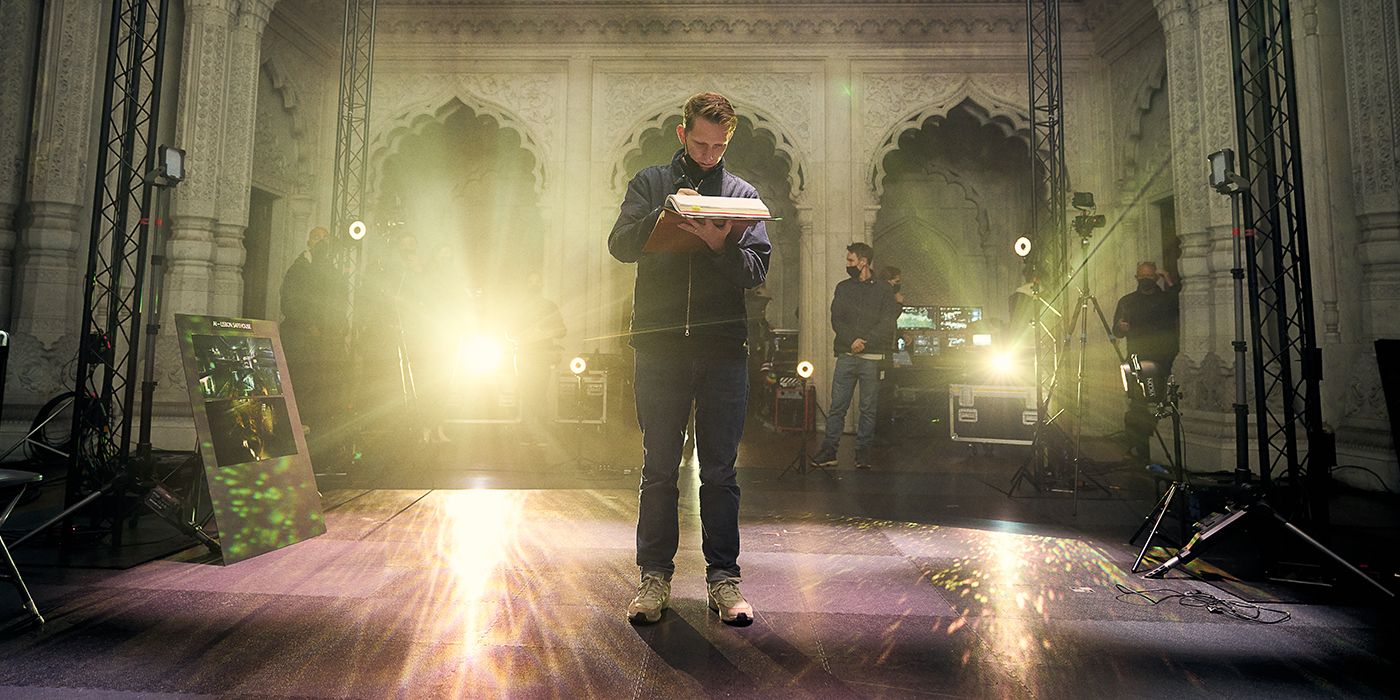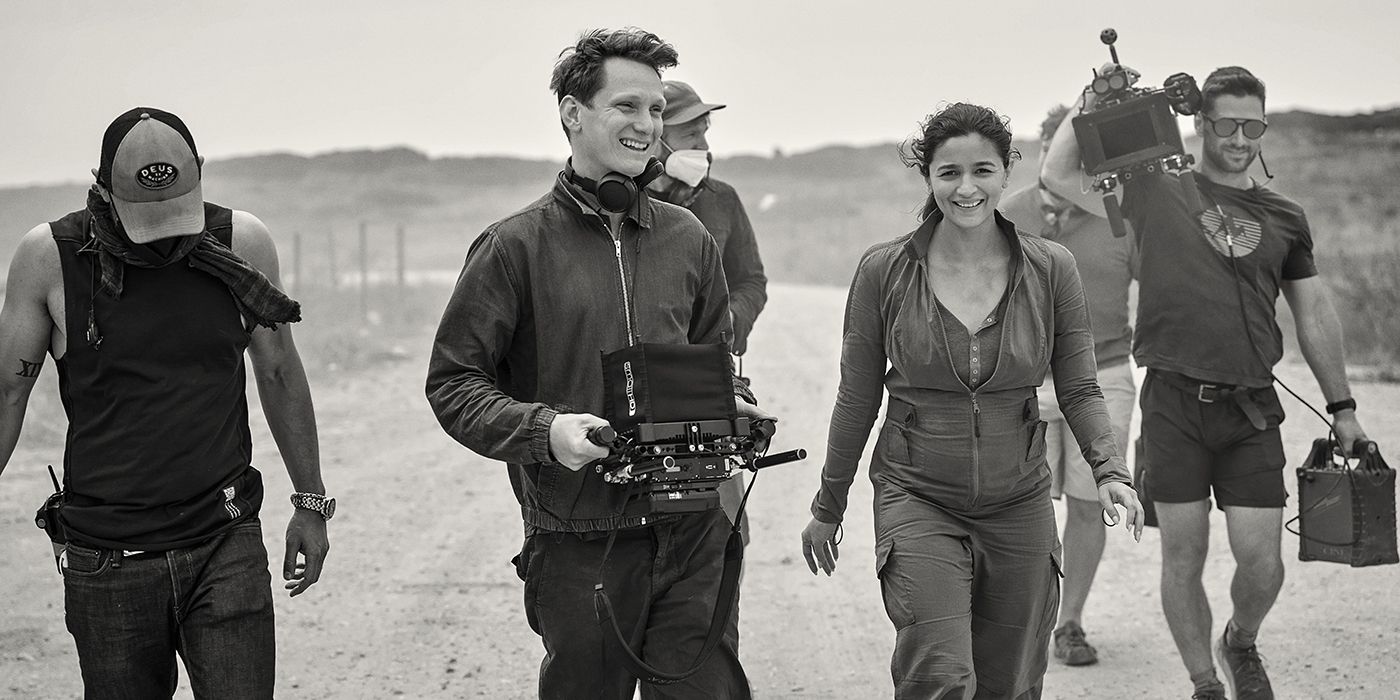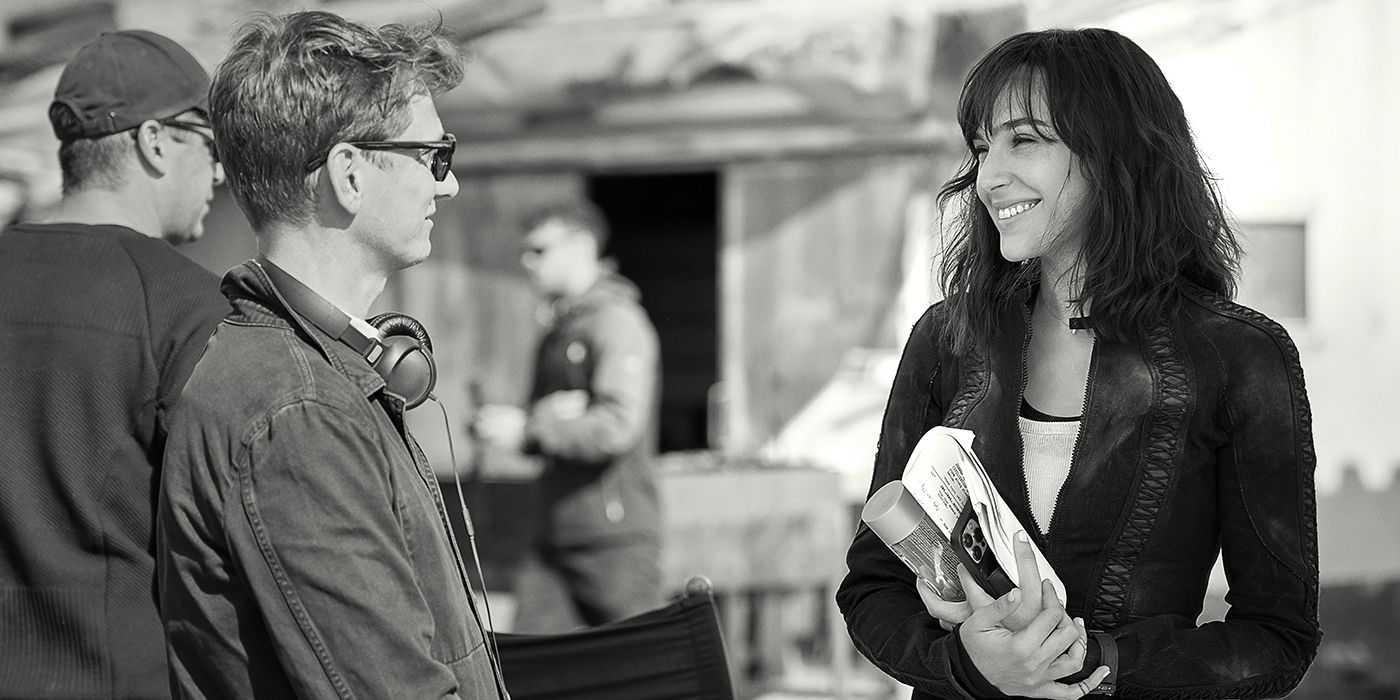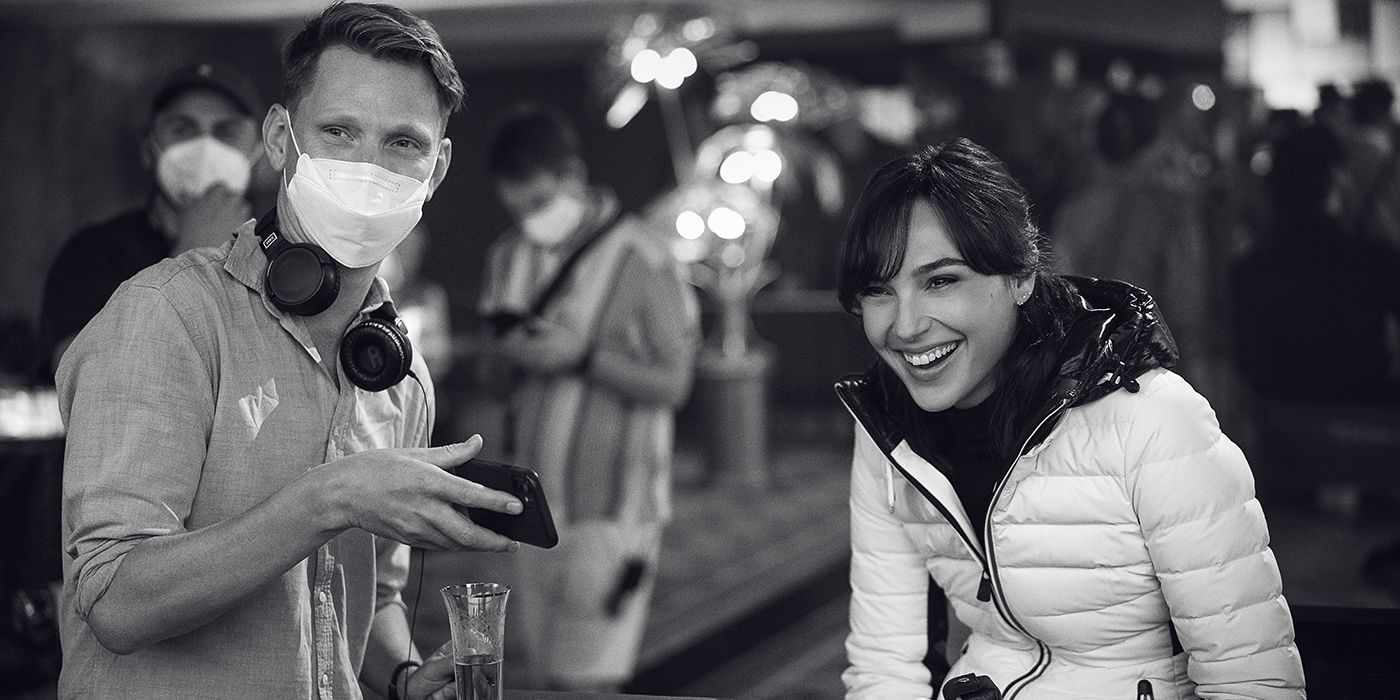Summary
- Gal Gadot stars in the Netflix spy thriller Heart of Stone as an international agent trying to save her team and protect a special AI called The Heart from a malicious hacker.
- Director Tom Harper was drawn to the project because of the opportunity to create an original movie in the spy genre and work with Gadot as a female lead.
- The movie combines elements of traditional spy films with new ideas, and the action sequences are a mix of practical effects and visually enhanced scenes to maintain authenticity.
Gal Gadot is throwing her hat in the spy genre ring with Heart of Stone. The Netflix spy thriller centers on an international agent working undercover in MI6 whose cover is blown when she tries to save her team from a malicious hacker and works to keep her agency known as The Charter safe, namely its special AI known as The Heart.
Alongside Gadot, the star-studded cast for Heart of Stone includes Jamie Dornan, Alia Bhatt, Sophie Okonedo, Jing Lusi, Paul Ready, Archie Madekwe, Matthias Schweighöfer, BD Wong, and Glenn Close. Helmed by The Aeronauts‘ Tom Harper, the movie is an explosive blockbuster perfect for those looking for a new take on the spy genre.
Ahead of the movie’s release, FilmmakerFocus spoke exclusively with director Tom Harper to discuss Heart of Stone, the thrills of collaborating with Gadot on the thriller, and the challenges of tackling his biggest production yet.
Tom Harper Talks Heart of Stone
FilmmakerFocus: Well, first and foremost, congrats on this movie, it really is quite a lot of fun. What got you interested in the project in the first place?
Tom Harper: Well, it was a number of things. One is, I really love [spy movies], it’s a genre I grew up watching, and I really love. But it’s kind of tough, because there’s not that many original films within this genre, or in fact this sort of budget level. It’s very rare to get something that’s not based on a pre-existing piece of IP. So, as much as I love some of the other franchises, you know, the Marvel films or the Indys, or the whatever it is, the thought of being able to create something from scratch was really appealing, combined with that it had Gal already attached, and, and it had a female lead at the center of it. That’s something that, again, in this particular genre, there’s very little, so it was those two things really that kind of appealed to me most.
So, in talking about putting together an original story, it does feel very new, while also still leaning into some of the highlights of the genre. How closely did you work with Greg Rucka and Allison Schroeder to really harness this, and how different is the movie from their original drafts?
Well, I love that you took the directions that you did, because it really does feel like it sets up a lot for the future, but also really introduces a lot of really fun ideas to the genre. Going off of your point about the villain, Alia Bhatt is phenomenal in this movie, I loved seeing her arc throughout as the story progresses. What was it like working with her, in particular, because I’ve loved seeing this rise of a lot of Bollywood icons in more English-based productions.
Tom Harper: I think that’s one of the really nice things about the streamers is that, because as the market becomes increasingly global, and it goes on the platform in all countries in the world at the same time, they’re increasingly aware of how many great talented people are in other countries. I think that, not just with Alia, actually, but with Matthias, as well, obviously with Gal, with Jing, with Jamie, that’s a real multinational cast, and it sort of feels organic within the story, I really love that. Alia is just a great example of someone who’s a ferocious talent, who’s luminous, and charismatic, and has everything that you want from a movie star, but, she’s a real artist as well. She does have a huge body of work behind her, she’s been an actor for a very long time, and really honed her skills. It’s great, it’s a real pleasure working with her to get that opportunity.
Was there anything in particular that she maybe brought to the character that wasn’t already on the page or already in your mind?
Tom Harper: I mean, it’s an obvious one, but first and foremost, that character was always Indian, but she brought that authenticity, and she was able to bring that nuance to the character. She had lots of ideas about where Dhawan was from, and what her upbringing might be like, and things that she might say, and she wouldn’t say. Again, just a level of authenticity to that, she just really threw herself into it. The thing I liked most about what she did is you really made that villain feel — or that character, I should say — feel grounded, because the villain never thinks they’re the villain. No one goes and thinks that they’re doing bad things, or even if they do, they think they did it for good reason, and they justify it. I think that’s what she really brought to it, she really had a very clear idea of what she was doing, why she was doing it, and I think that makes it feel like a rounded character you believe, and who you’re interested in.
Definitely, from the moment that she takes issue with some of the killings going on, I was like, “Okay, this is a well-rounded villain already.” Earlier, you mentioned the scale of this movie, and as far as I can tell, this is probably the biggest production you’ve done, maybe after The Aeronauts. What was that like for you taking on this grand scale of a project in comparison to your prior works?
Tom Harper: It’s so different, but also the same. [Chuckles] It’s quite a hard thing to describe, it’s so different, because obviously, you’re going to many different countries, you’ve got a huge team of people that you’re working with, and just logistical challenges are enormous. It’s a huge operation, but at the same time, it’s the same thing, you’re bringing to life some characters, you’re telling a story. Really, when the camera turns over, it’s just the intimacy between the camera and the actor, and you’re trying to capture this magic, and that’s the same whether it’s $150 million, or whether it’s $150,000. It’s the same thing, and that’s the bit that appealed to me the most. It was great to have a big canvas to work on, but actually, the real important stuff is those intimate moments between the actor and the camera.
I love that Gal has a lot of really intimate moments, a lot of vulnerable moments in this movie, as much as she does a lot of action-packed ones. How did you go about fostering that level of trust with her to really allow herself to open up that way for her performance?
Tom Harper: It was something that, honestly, she was really open to and wanted from the very beginning. Our very first conversation, she spoke about wanting to show a different side. She’s obviously done Wonder Woman and Fast & Furious, and many other things, but she wanted to do something a bit more grounded, that felt a bit more real. I thought that was really exciting, and, again, because she was at the very heart of the development process, it meant that we worked together for quite a long time before we hit set, so we were able to build up a trust before the cameras started rolling. I think that so much of directing is about that, it’s about working with people to create a space where you can take risks and be vulnerable, because it’s a very exposing medium, isn’t it? You’re not just putting your work out there, you’re putting your image, and your face, and your body on it, as well. I think that, in order to deliver great performances, or to do anything creative in a good way, you have to be prepared to try things. Just by the very nature of trying things, and taking risks, sometimes you fail, right? So, you need to have a very trusting [relationship], and sometimes you fail, but then sometimes magic happens, and sometimes something wonderful happens. That’s what I think of the creative process, it’s about knowing that it’s okay to try things, and it’s knowing it’s okay that it doesn’t quite come as you expect, and that can only come with a relationship of trust with the people you’re working with. So, it was really a really great thing that, firstly, Gal was open to that, and secondly, that we got the time to get to know each other, and get to trust each other before we started flying.
I’m glad you were allotted that extra opportunity to really build that relationship.
Tom Harper: It’s great, and [it reminds me] pretty much one of my favorite scenes where — Gal is spectacular in that scene — where she’s kicked out The Charter, with Sophie. They’ve worked with each other before, as well, on Death on the Nile, so they knew each other, and had a trusting relationship. I’ve worked with Sophie many times before, as well, so the whole thing just felt like a really great space to be able to work in.
Well, it pays off dividends throughout the movie. Speaking of taking risks, I love that the action of this movie feels somehow both very practical as well — I don’t want to say CGI heavy, because that always has a negative connotation — as effectively using VFX. How did you go about putting together some of these grand set pieces with those two mindsets?
Tom Harper: Well, it started off with thinking back to some of my favorite movies from the past, and actually, I go back quite a long way with those references to The Spy Who Loved Me, or Three Days of the Condor, or The Driver, back in the ’60s and ’70s. Obviously, all the action was done for real, and I think you really feel that, and that helps you feel the jeopardy for the characters, because it’s done for real. So, we really wanted to try and capture some of that authenticity, and we applied that to everything we did. We basically did everything for real. Now, sometimes, of course, we are not in the ’60s or ’70s anymore, and technology’s moved forward, and audience appetites have moved forward. So, there was visual effects involved, but whenever we use it, we tried to base it on reality. To give you an example for that, all the skydiving for example, we had a big exploding blimp in the air, which we couldn’t do for real, but we did do all the shots for real. So we shot them with doubles with a camera with them jumping out, so all the moves, and all the bodies, and all the performance is real. Then, we just put stuff in the background, and tracked the camera to enhance the shot, or whatever it was. But again, it’s all based on real scenarios, so the sky is real, and the camera moves through, and the body movement is real. That’s the most CGI-heavy stuff that we did, everything else — the car chases and everything — is entirely real. The vast majority of it’s real, and then anywhere it’s not, it’s got lots of real elements, and based on on real footage.
Well, it’s a perfect blend of the two, and I love that the skydiving sequence, in particular, was one that I had in my mind coming up to this question, because it really does feel like a nice blend.
Tom Harper: I’d rehearsed that, honestly, with Aeronauts, as well, so we’d got some practice in. [Chuckles]
I figured out that might have helped, having that little bit of history there.
Tom Harper: I think it’s probably one of the reasons I got the job, actually. Because that sequence was always in the film, and Skydance, and David Ellison and Don Granger, when I met with them, had seen Aeronauts and really liked it, and I think probably that sequence was fresh in their mind.

It was the perfect confluence of events! Before I let you go, for my final question, one thing I’ve always been curious about, how it is on set whenever you have a hologram computer, like with Matthias and The Charter headquarters? How do you go about getting in the mindset as a director in helping your actor get in that imaginative space of really feeling like they’re controlling something and monitoring this whole thing?
Tom Harper: It was actually one of the hardest things we did, you know, with all the big stunts we did, getting that right was a real challenge. But we prepped a lot for it, and we did lots of tests. So initially, we did some tests, where we just got a bit of a set, and we did some lighting tests, and then we put some visual effects into it. We looked at it, and we talked about it, and then we showed it to Matthias, and he fed into it, as well. Then, we had a movement coach, and they sort of devised a language, or a gesture, how you might interact with the interface of The Heart. They built up that language, and then we did some tests with Matthias, and then we took that back to Visual Effects, and we did some more stuff so that by the time we actually came to set, we had a pretty good idea of what it was going to look like. There was lots of interactive lighting, all the lighting is real, again, it’s just trying to make it feel as real as possible. Then the thing that we worked really hard on is just degrading visual effects, so that there’s RGB aberrations, and there’s flicker, and it doesn’t always work properly. There’s bits where it sort of glitches, and as we all know with technology, it never quite works how you want it to work. We got a projector, and my wife is constantly annoyed with me for fiddling with the TV to get the correct picture and sound, we sort of tried to put that into the creation of The Heart interface, as well, because no matter how much work and how much steel goes into something, if it’s new and cutting edge, it’s always going to go a bit wrong.
About Heart of Stone
Rachel Stone (Gal Gadot) appears to be an inexperienced tech, on an elite MI6 unit headed up by lead agent Parker (Jamie Dornan). What her MI6 team doesn’t know is that Stone actually works for the Charter — a covert peacekeeping organization, secret even from other spies, which uses cutting-edge technology to neutralize global threats. Rachel has been trained to be the consummate professional: a phenomenal field agent who sticks to the mission, follows the numbers, and trusts no one. When a routine mission is derailed by mysterious hacker Keya Dhawan (Alia Bhatt), Rachel’s two lives collide. As she races to protect the Charter and strives to beat the odds, her humanity might just be her biggest asset.
Check out our other Heart of Stone interview with Stunt Coordinator Jo McLaren!
Heart of Stone is now streaming on Netflix!
This section contains an interesting element that will captivate your attention. It’s a unique ad placement that adds excitement to the page. The debug data shows that there are no repeatable ads for this specific zone, but it provides valuable insights into the ad positioning and count.
Feel free to explore further and discover more engaging content on our website.












